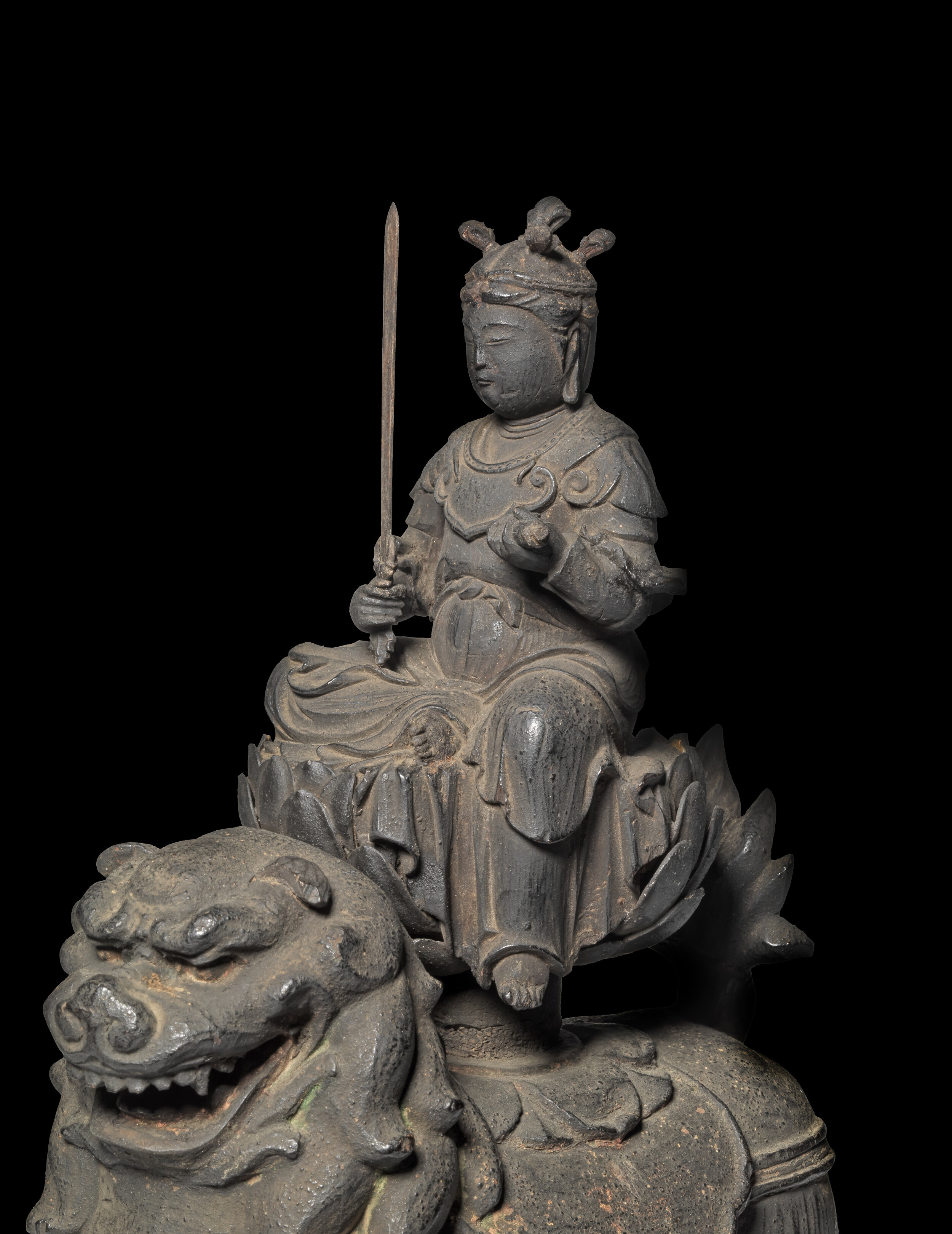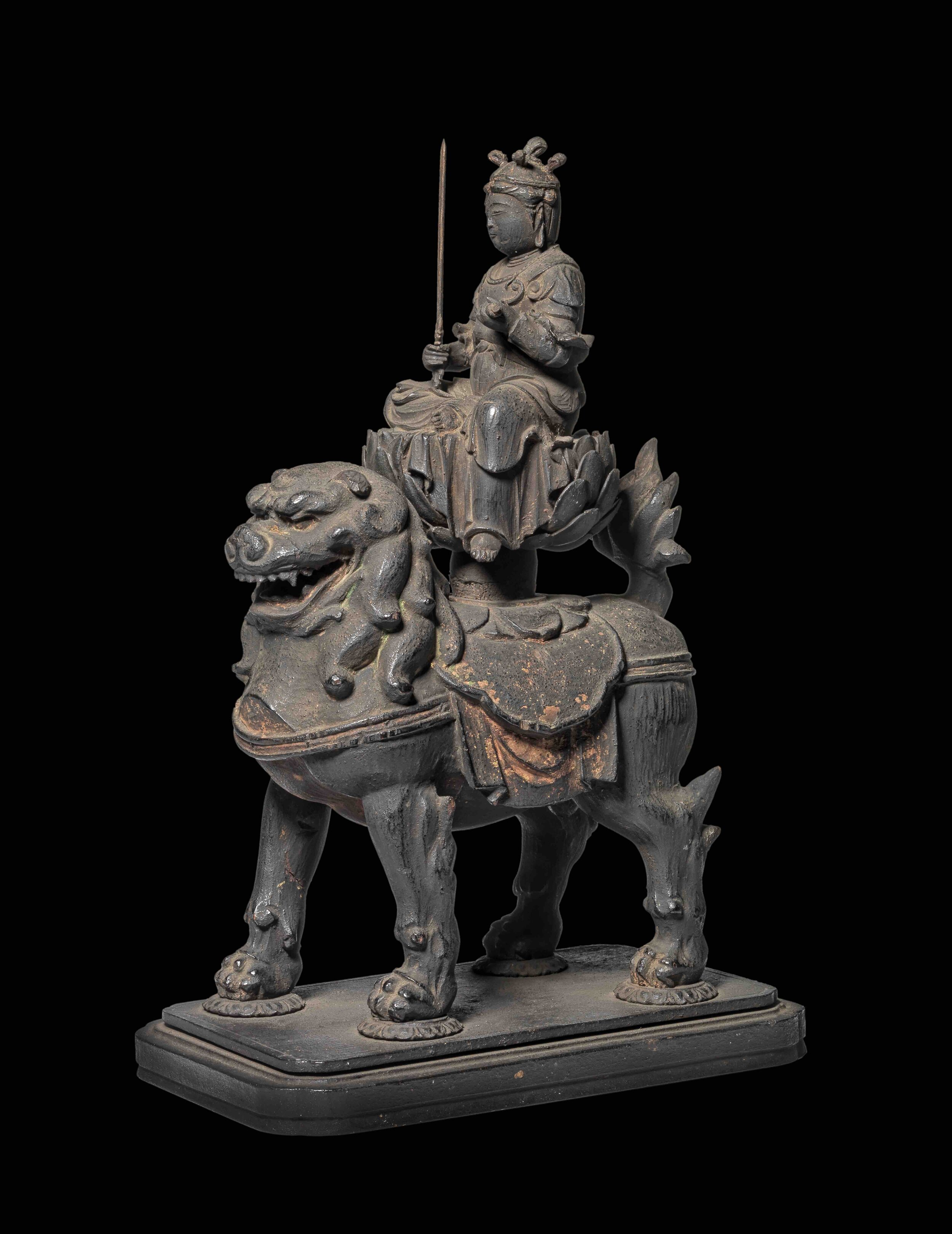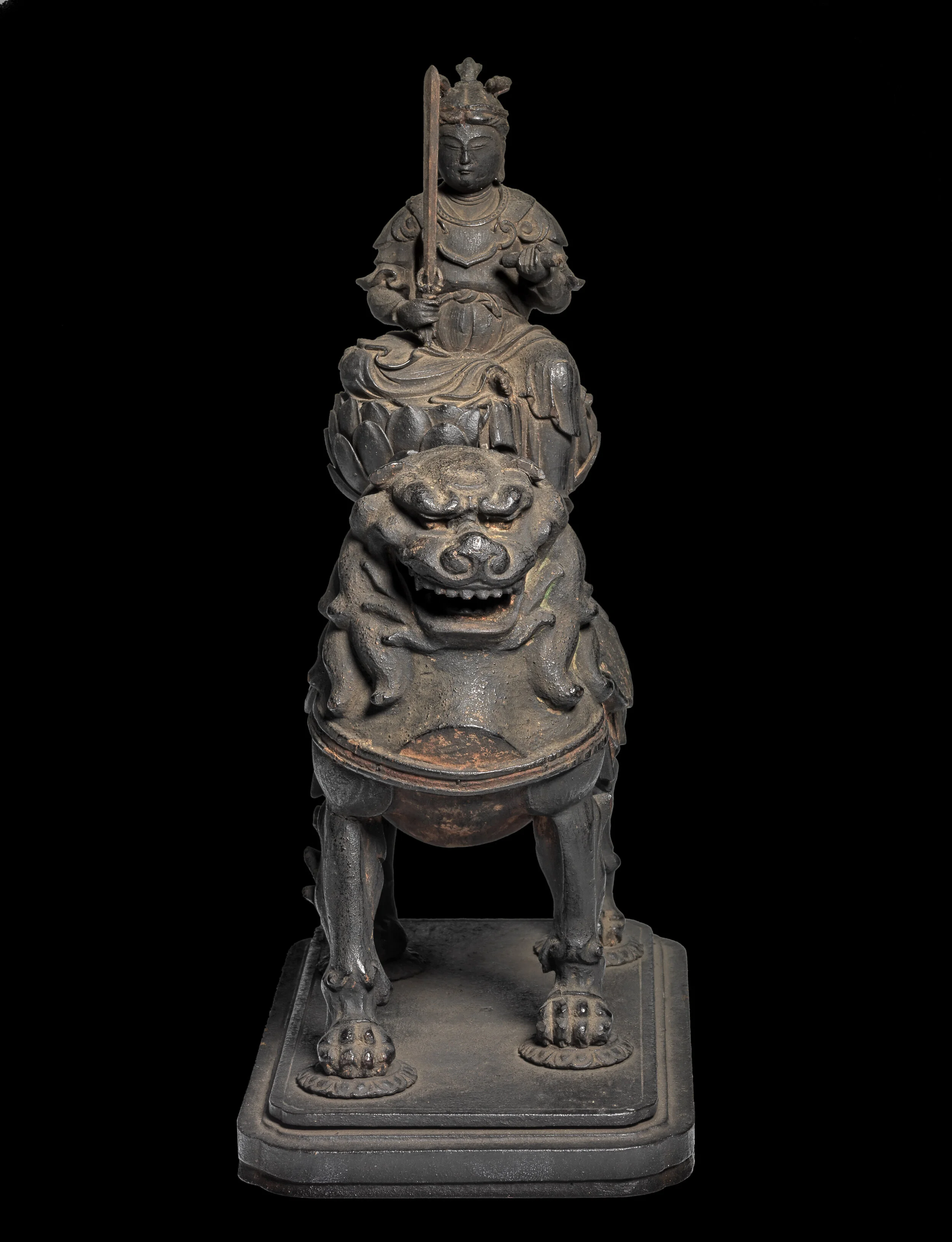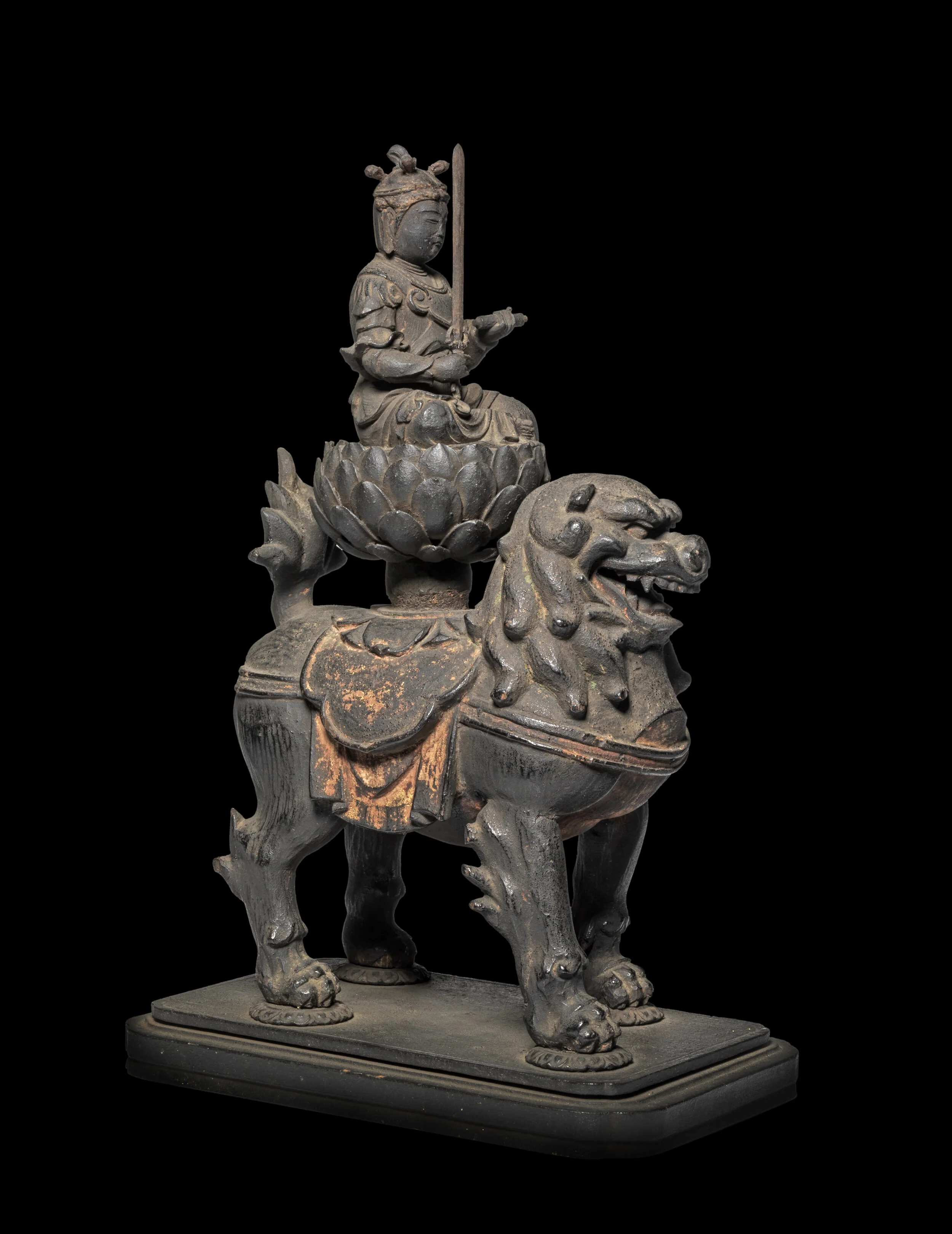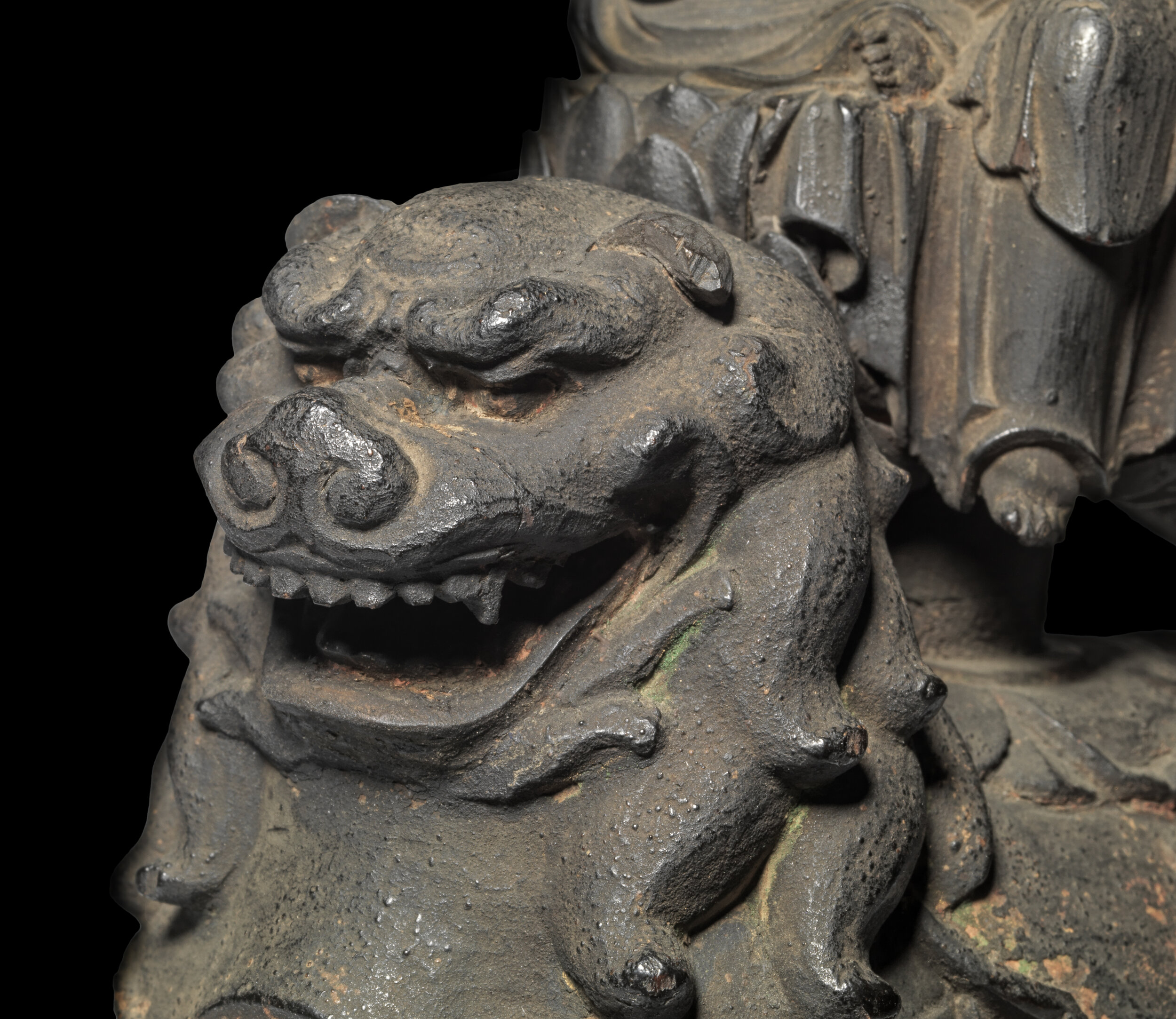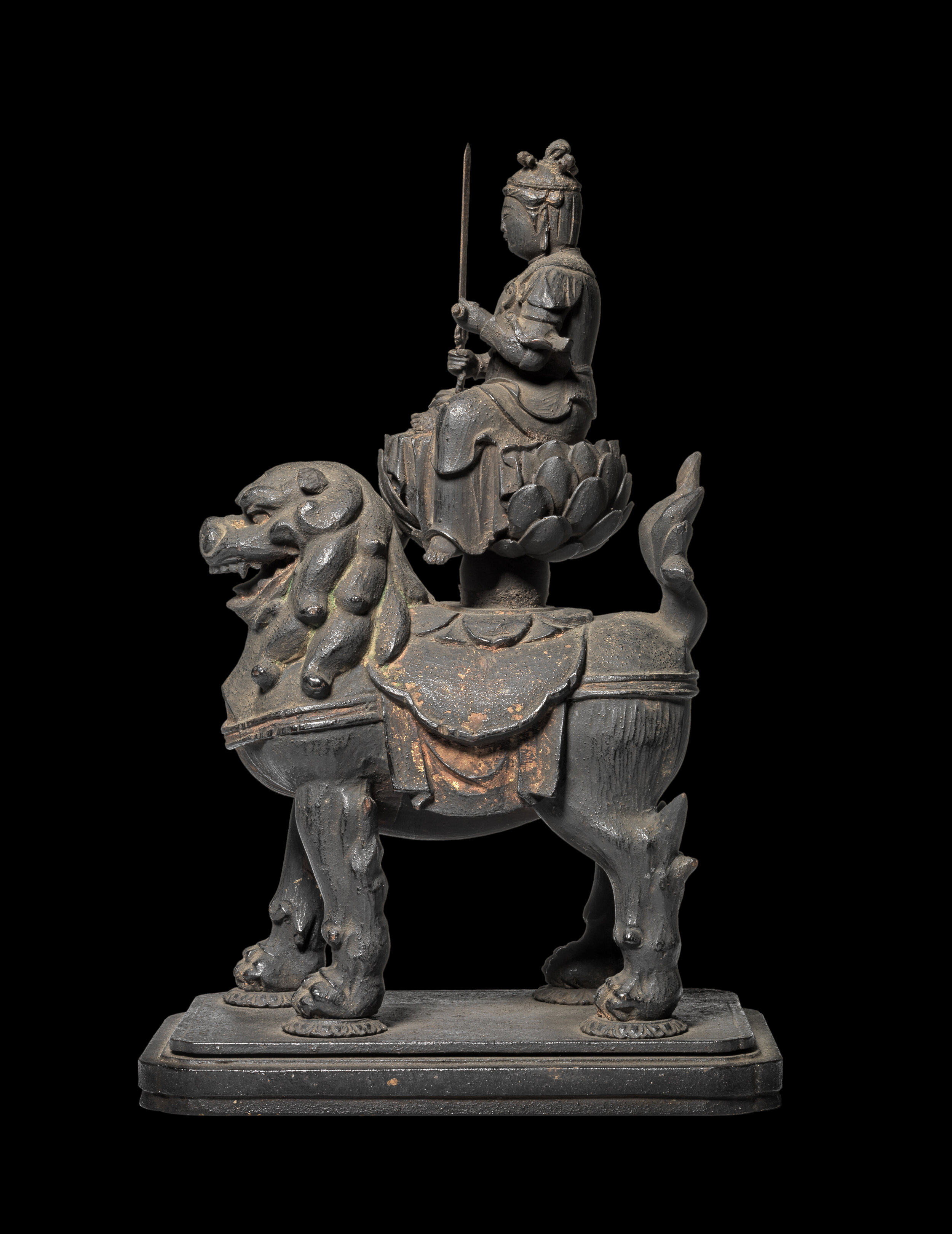A WINDOW TO WISDOM
Sydney L. Moss exhibits Japanese Buddhist sculpture
for TEFAF Online, 1-4th November 2020
Asian art specialists Sydney L. Moss will be offering a digital window into their London gallery with the exhibition of Gokei Monju, a rare Japanese temple sculpture of the bodhisattva of transcendent wisdom, at TEFAF Online 2020. The sculpture will be included in an exclusive selection of just 280 masterpieces in this online exhibition.
Monju’s significant presence in the Buddhist pantheon can be traced back to early sutras, becoming a pivotal deity in several Esoteric branches of Buddhism. Monju is a Japanese Buddhist sculpture, but is still deeply connected to his Chinese roots.
In the 9th century, a Japanese monk named Ennin (794–864) was sent as a delegate to China to discover as much as possible about the prosperous and flourishing government of the Tang dynasty (618–907). During his travels, he visited Wutaishan (Mount Wutai) in Shanxi province, and was captivated by the Monju cult worship he found there. Inspired by this devotion, Ennin returned to Kyoto and constructed a temple entirely dedicated to Monju, introducing the worship of this deity into Japan.
Although the iconography of Monju evolved over time in its Japanese surroundings, what is interesting to note about this particular sculpture is the traditional attribute that retained a Chinese essence – his hair. Gokei Monju’s five topknots are said to represent the five wisdom peaks of Wutaishan (lit. ‘Five Platform Mountain’), meaning that the imagery of this deity is still intrinsically linked to the Chinese hallowed place of enlightenment. Despite being exposed to several centuries of Japanese culture, this sculpture still echoes the importance of the Chinese Wutai cult of Monju.
Gokei Monju holds the characteristic items of the bodhisattva of supreme wisdom: a sutra in his left hand, and a sword in his right, used to slice through illusion and arouse awareness. He sits with one leg tucked beneath him on a lotus pedestal, which is mounted on a roaring shishi (liondog), representing Monju’s ability to subdue ignorance with wisdom, just as he has tamed the savage beast on which he rides.


